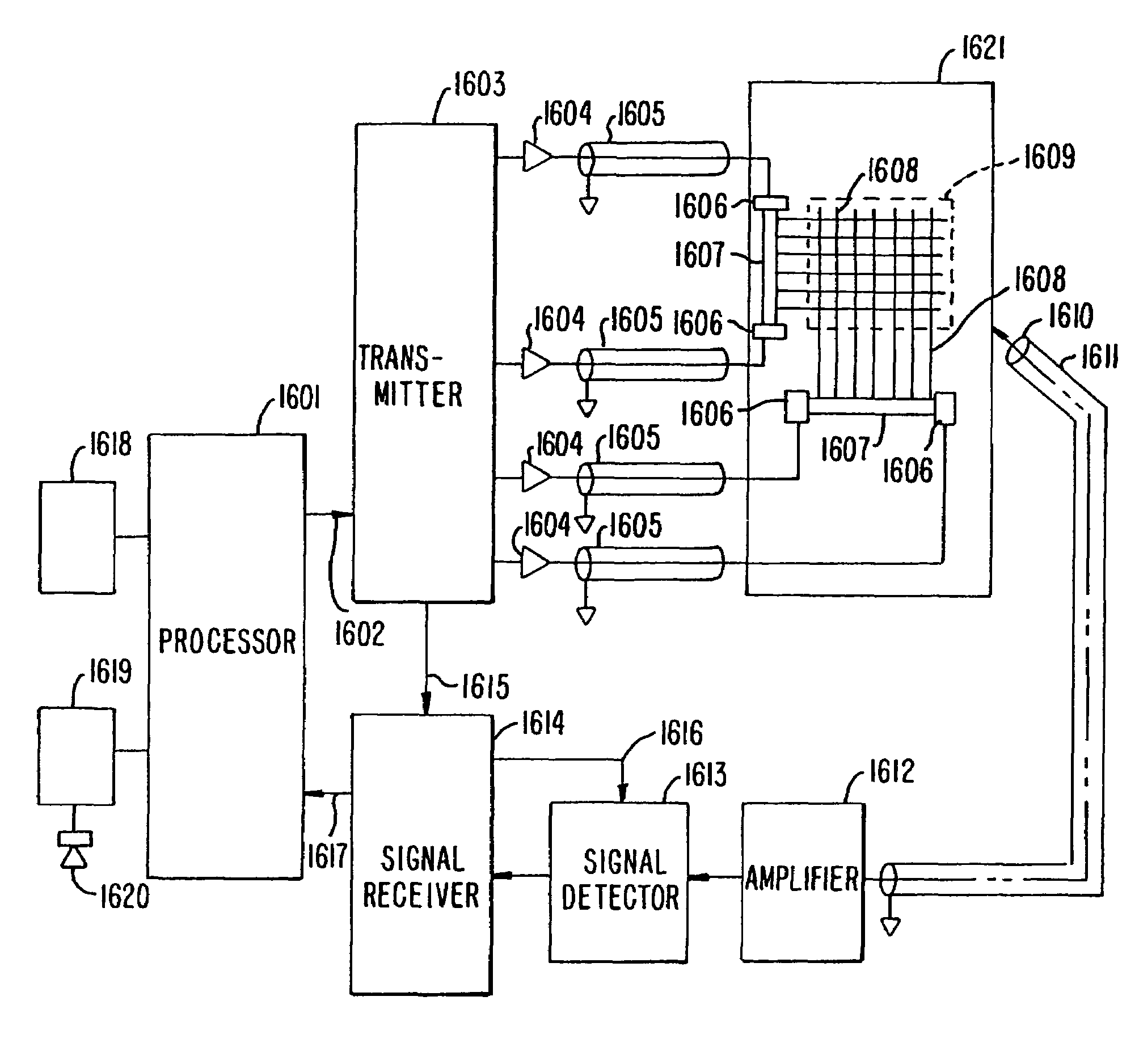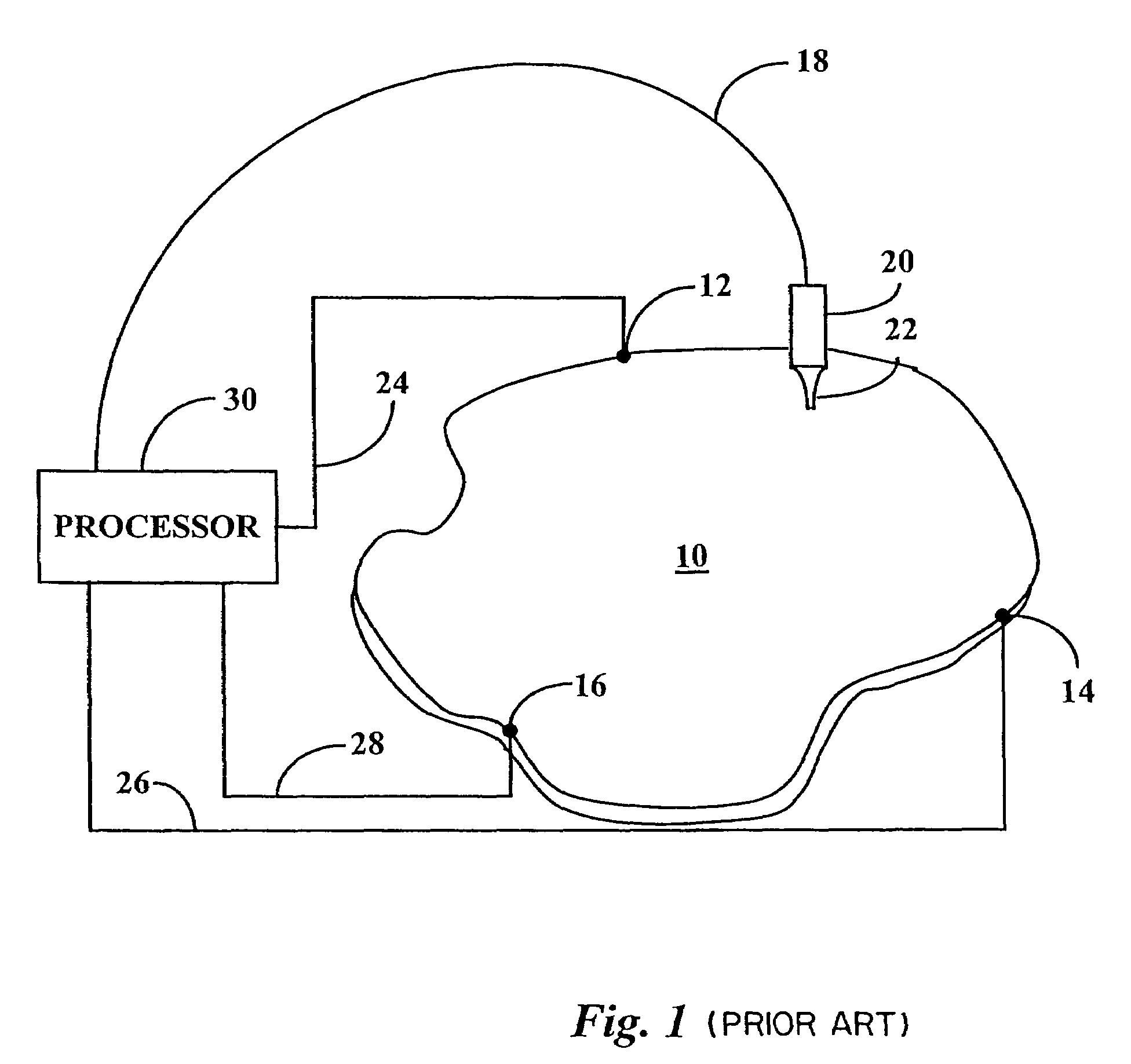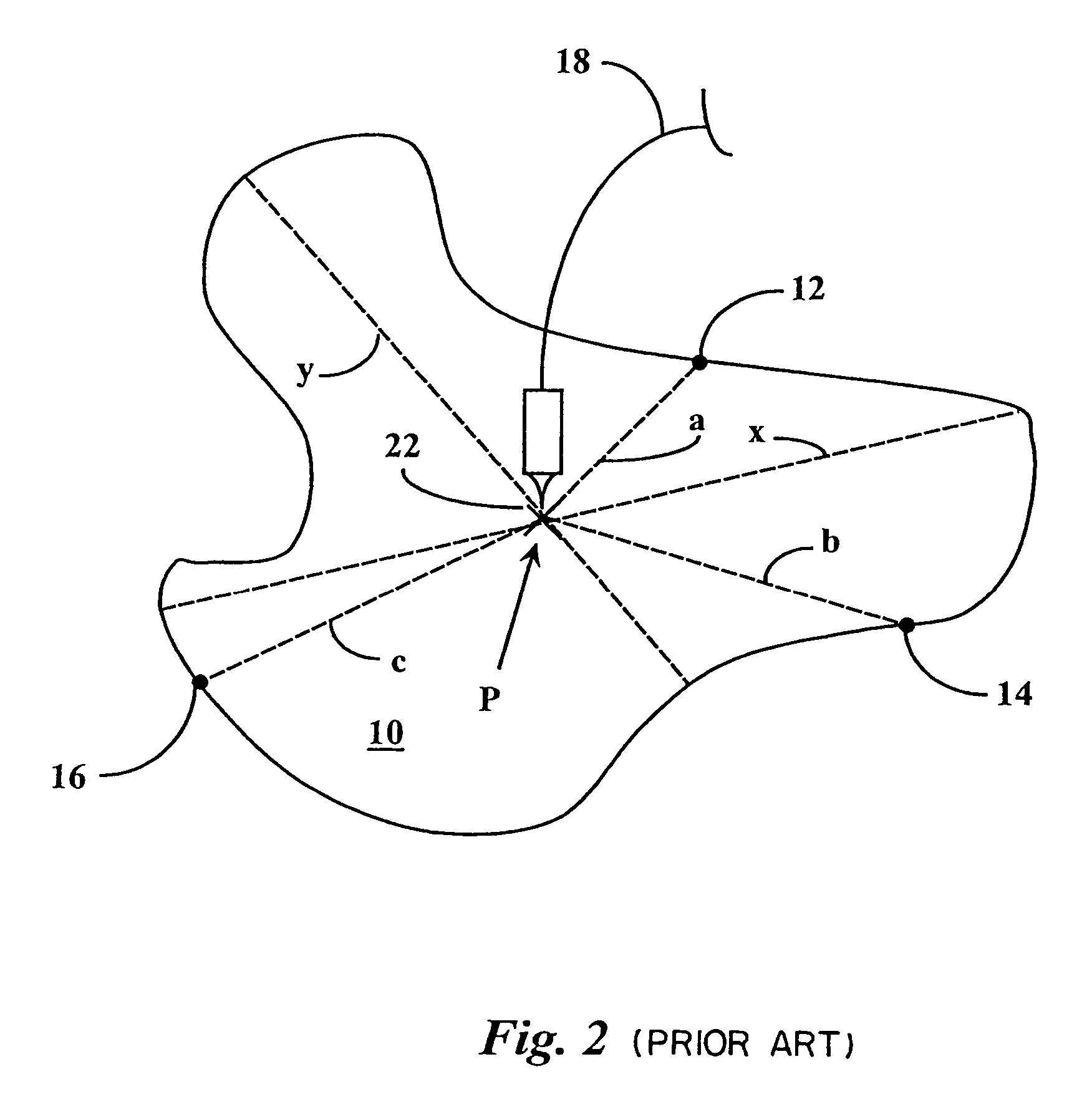Electrographic position location apparatus and method
a position location and electromechanical technology, applied in static indicating devices, instruments, differential interacting antenna combinations, etc., can solve the problems of large number of pixel elements required to achieve a high resolution, limited resolution of conventional membrane switches, and significant electronic memory and computing time for mathematical calculations. achieve the effect of improving linearity, reducing curvature, and improving the control of equipotential contours
- Summary
- Abstract
- Description
- Claims
- Application Information
AI Technical Summary
Benefits of technology
Problems solved by technology
Method used
Image
Examples
Embodiment Construction
[0049]The present invention generally comprises an electrographic position sensing system, including antenna apparatus for an electrographic position location system, a method of fabricating the antenna apparatus, and the use of the antenna apparatus in an electrographic position location system. As used in this application, an electrographic location detection system is a system in which an antenna system generates a radiating electric field which may be detected a short distance proximate to the antenna surface by a stylus containing a receiving antenna element. Consequently, as used in this application, an electrographic location position system may detect the position of a stylus brought within a preselected distance from the active surface.
[0050]For detection systems similar to those shown in FIGS. 1-4 in which the equipotential lines are generated by radio frequency (rf) drive signals, for example a frequency of about 60 kHz, the equipotential lines will have an instantaneous ...
PUM
 Login to View More
Login to View More Abstract
Description
Claims
Application Information
 Login to View More
Login to View More - R&D
- Intellectual Property
- Life Sciences
- Materials
- Tech Scout
- Unparalleled Data Quality
- Higher Quality Content
- 60% Fewer Hallucinations
Browse by: Latest US Patents, China's latest patents, Technical Efficacy Thesaurus, Application Domain, Technology Topic, Popular Technical Reports.
© 2025 PatSnap. All rights reserved.Legal|Privacy policy|Modern Slavery Act Transparency Statement|Sitemap|About US| Contact US: help@patsnap.com



